From Birchbox to Dollar Shave Club, and Kiwi Crate to Netflix, we seem to live in a world of subscriptions, whether it be for software, movies, clothing, food, or whatever else you don't mind paying for with a monthly subscription. There's a reason so many subscription-based business models seem to be popping up. It's tough to break through with a successful product, but the rewards are enormous, with cash flow benefits, brand loyalty, and clear revenue projections on a regular basis.
In ecommerce, subscriptions are always an option. So in this article, we'll cover how to start a subscription business, with thoughts on why subscription businesses are so popular, the different types of subscription business models, along with best practices to get you started.
Benefits of a Subscription Business
Click the + for more info…

How to Start a Subscription Business with a Platform and App
How do you go about building, designing, and structuring a website to run your subscription business?
Here are the steps to get you started:
- Start a store with Shopify. You can also look into other ecommerce platforms from our list of the best platforms from this year.
- Install a template. You can technically choose any type of online store theme as long as it fits your brand. Yet, you can also find subscription-focused themes on Shopify, and from other premium theme creators.
- Install a subscription app like Recharge Subscriptions, PayWhirl, Bold Subscriptions, Seal Subscriptions, or Appstle Subscriptions.
- Activate essentials like payment processing, product pages, sales channels, shipping, and taxes.
As an alternative, you have the option to create your own subscription store by utilizing the Shopify Subscriptions API.
To give you an example, you can go to the Shopify website to start a free trial.

With an account, that gives you full access to the Shopify dashboard, where you can start building a subscription business with a website template.
Go to the Themes button under the Sales Channels menu, then either search for new themes or customize the one currently active. Keep in mind that just about every theme in Shopify is capable of supporting subscriptions; there's not really a special theme that's optimized for subscriptions.
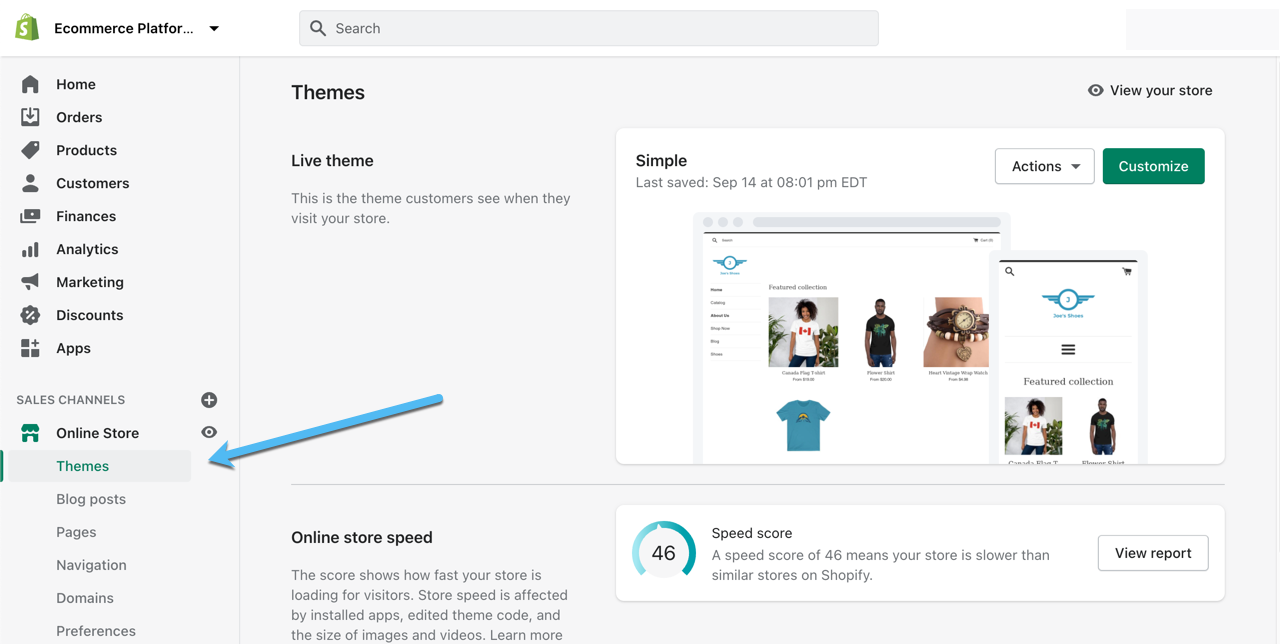
Browse through the free and premium themes, and select one that fits your brand.
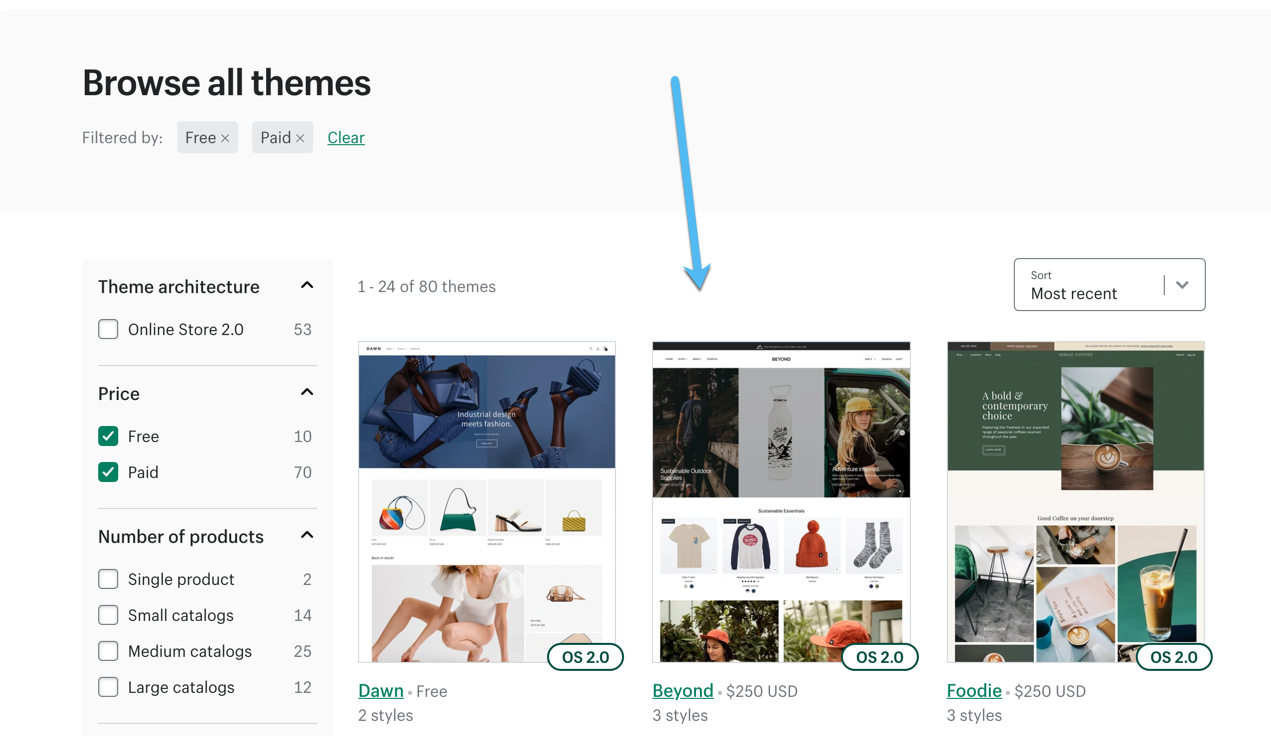
Throughout this process, feel free to add products and customize the look of your online store.
To add subscription capabilities, you must install a third-party app.
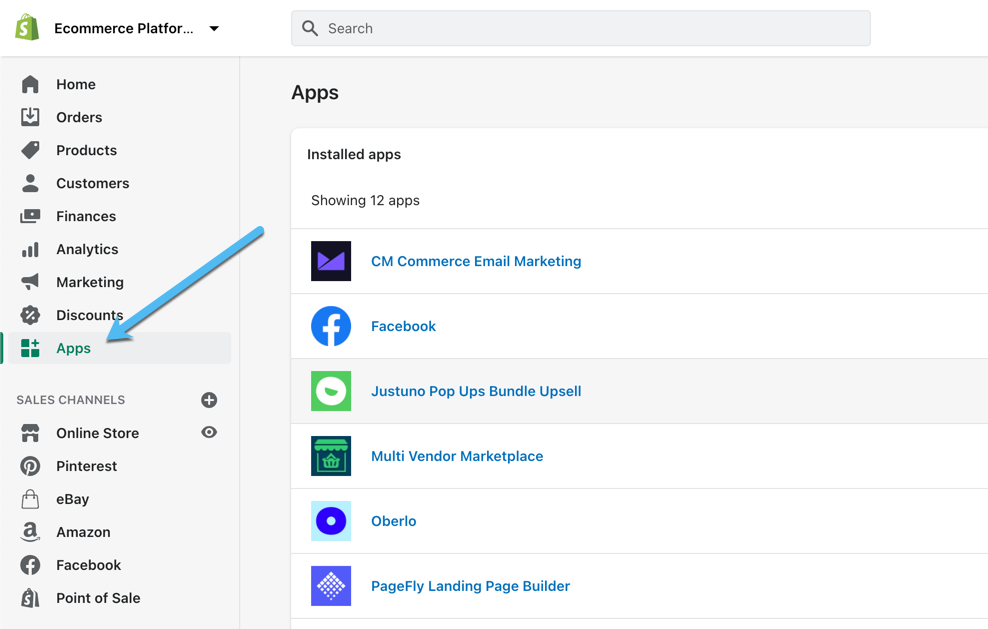
In the app store, search for “subscriptions” to see the wide range of apps available.
Here are some key subscription apps to consider:
You might also think about a standalone checkout and subscription module (instead of Shopify) like Lemon Squeezy for digital subscriptions or Checkout Page.
We suggested a few in the previous paragraphs, but for this tutorial, we'll go with the Recharge Subscriptions app combined with Shopify.

Once installed, you can assign subscriptions to your products from the Recharge Subscriptions app. It lets you choose subscription timing, how much the customer saves when they subscribe, and how frequently the packages should be delivered. Then, the customer sees the subscription options on the frontend of that product page!
Note: The suggested apps all provide unique types of subscription models. Our example focuses more on the ecommerce subscription model, but you could set it up for anything from access subscriptions to replenishment subscriptions. We'll explain all models in the sections below.
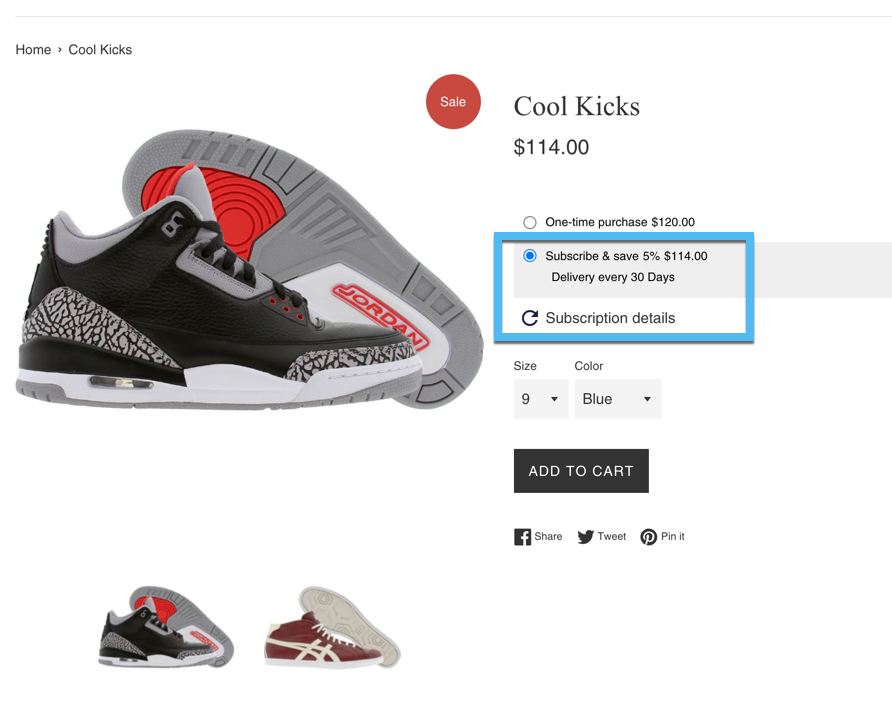

Picking the Best Subscription Business Model
Several subscription business models exist. The one you choose depends on which one will benefit your type of subscription business.
Here are your options:
Replenishment Subscriptions
A replenishment subscription is all about convenience and automation. In short, customers sign up for your subscription service, then receive a weekly, monthly, or quarterly replenishment of items to replace the ones they've used over the previous period.
A replenishment model usually works for commodities, substances, and disposable items that eventually get thrown out, completed, or go out of style. Examples include some food or snack boxes, razors and toiletries, pet food, or even book clubs where the reader eventually completes the book and needs a new one.
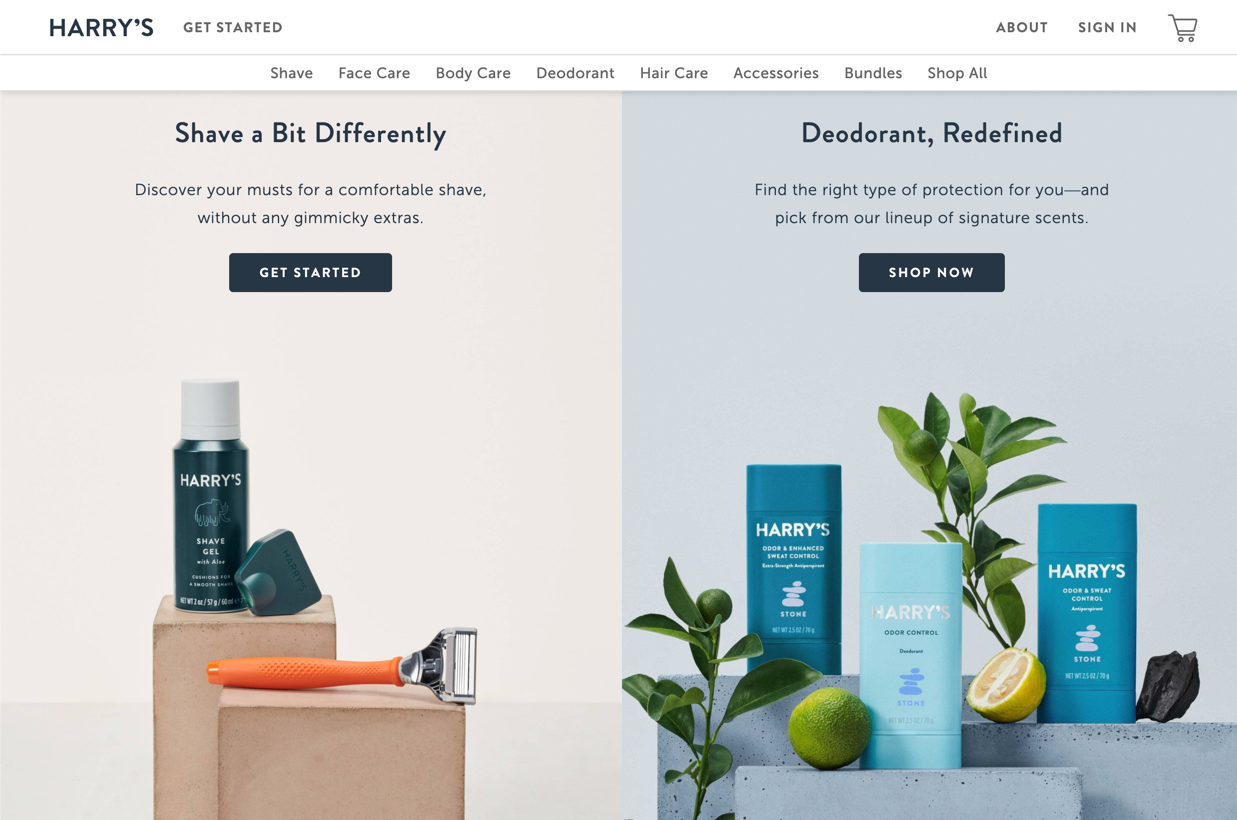
Benefits
- Conversion rates are higher due to lower costs and the desire for automation.
- People tend to stick around longer since they often need these items on a regular basis.
- It's easy to upsell and cross-sell.
Potential Downsides
- The margins are usually small since replenishable subscription companies tend to compete with other companies that already offer very low prices.
- It's harder to stand out since you're not necessarily offering a better product.
- You'll most likely see competitors try to duplicate the exact form of your business.
Access Subscriptions
People love exclusivity; just ask country club members, Costco members, and the early users of Facebook. Being part of a club makes people feel included, but it also tends to come with benefits. An access subscription model runs a members-only type situation, where subscribers gain access to things like steep discounts, member perks, or lower shipping costs. We see access subscriptions in all sorts of industries, from fashion to food, and dog food to toiletries.
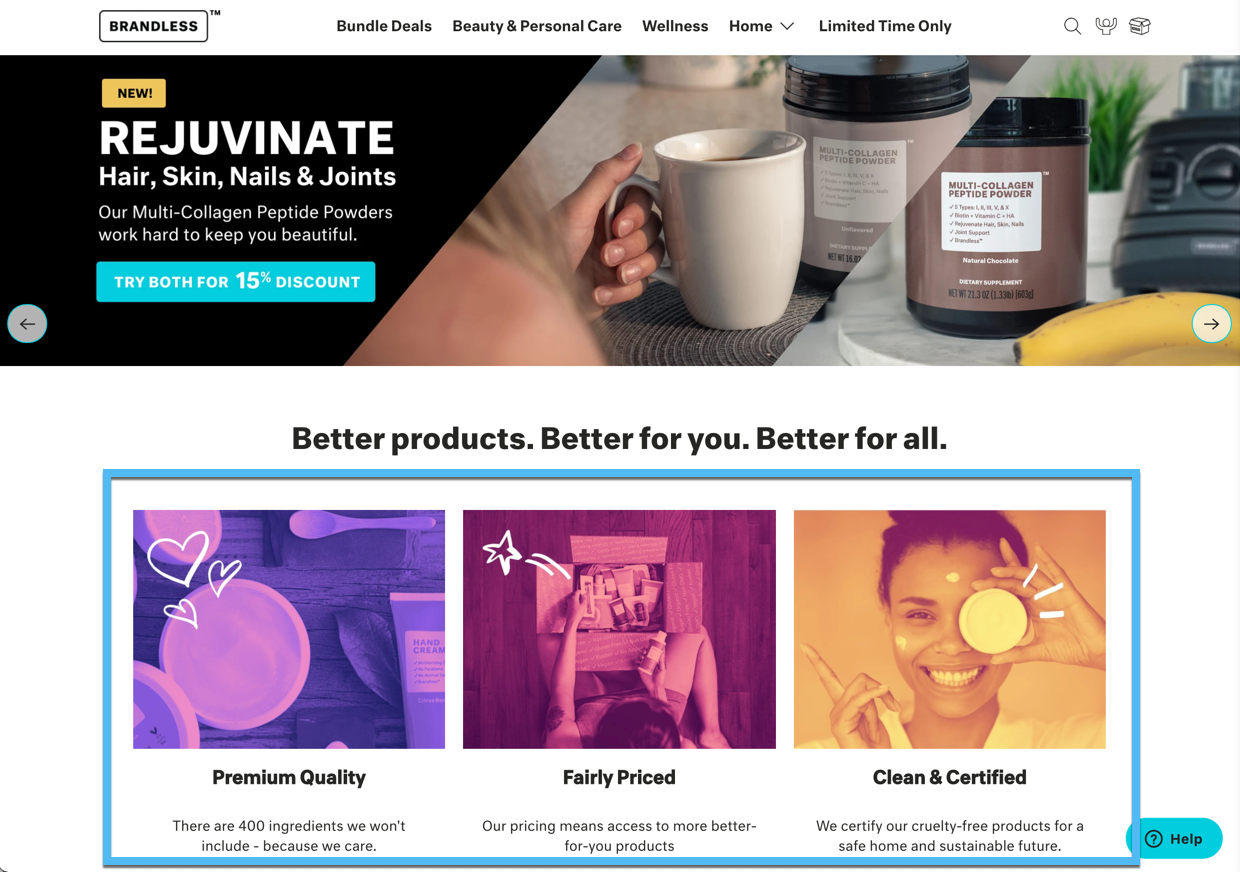
Benefits
- It's an excellent pricing model for business owners looking to bundle products.
- Customers feel like they get a better deal every time they shop. And this is often true!
- There's a greater opportunity to offer personalized discounts, marketing messages, and perks.
Potential Downsides
- Customers may occasionally feel like they need to spend too much time with their subscription to see any real financial benefit.
- Successful subscription businesses with access models take an extraordinary amount of clever planning and accounting knowledge, seeing as how you must figure out how to account for the often steep discounts by collecting member fees or potentially upcharging on certain products.
Saas Subscriptions
SaaS (software-as-a-service) refers to software companies selling their digital products as online subscriptions as opposed to one-off payments like they used to. SaaS subscriptions are highly popular across the technology industry with examples like QuickBooks, Adobe Suite products, and Microsoft all shifting to subscription models. Regardless, it's definitely a worthwhile model to consider when learning how to start a subscription business.

Benefits
- The company selling the subscriptions receives greater cash flow, and often higher long-term revenues when compared to one-off software payments.
- Customers receive continued customer support with their subscriptions.
- Customers don't have to give a large chunk of money upfront.
- This allows for continual marketing to bring in new customers, instead of only marketing for a new software release.
- It's easier to automatically send out upgrades to the customers.
- You can easily bundle software products.
Potential Downsides
- Some customers really dislike the idea of paying money to a company forever. For instance, many people used to pay a few hundred or thousand dollars for Adobe Photoshop and use the same version for 20 years. The new subscription model means that photographers and designers are constantly paying Adobe well into the future.
- There's a higher expectation for ongoing customer support, so your company may have to invest more into customer support representatives.
Ecommerce Subscriptions
An ecommerce subscription takes a standard online store and offers recurring purchases to its usual customers. This works best for products that require replenishment but could technically work for anything. As an example, a tea company could take their current online store and almost instantly start offering a checkout option for people to receive an order of lavender or chamomile tea every one, two, or three months. The alternative payment option usually gets shown under a Subscribe And Save section.
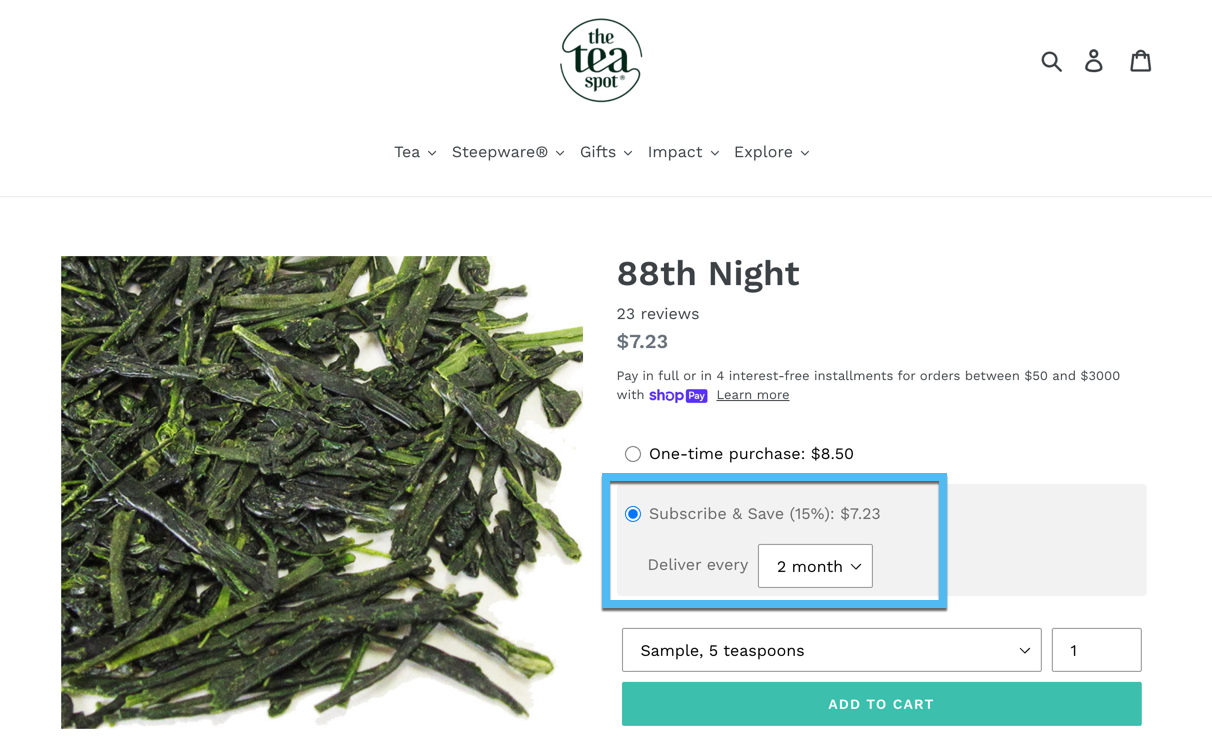
Ecommerce subscriptions only make sense to customers if they receive some sort of discount for signing up. On the flip side, the online store maintains a more consistent flow of business.
Benefits
- Ecommerce subscriptions help maintain a regular, more predictable level of sales into the future.
- You're able to boost average order values by convincing customers to add recurring shipments.
- This also provides an opportunity for bundling products, where multiple items get shipped every month or week to the customers.
- Customers are happy because they save money on every order.
- It automates the purchasing process for both the customer and online merchant; the customer doesn't have to think about shopping every week or month, while the merchant can prepare for the upcoming inventory requirements.
- Just about any current ecommerce store can add this type of subscription model to their store with one simple app on Shopify.
Potential Downsides
- It could lead to some customers trying to game the system, where they sign up for a subscription to obtain a quick deal but cancel before the next subscription payment is required.
- Stores must now collect more customer data, which could lead to defunct payment methods in the future.
Curation Subscriptions
Curation, right now, is the most trendy type of subscription model. It's definitely not the oldest, or the most reliable, but recently, startups have been figuring out ways to provide whimsical, surprising, and helpful curation boxes.
Curation box examples include Kiwi Co, Stitch Fix, and Imperfect Foods (they also use replenishment and access elements in their business).
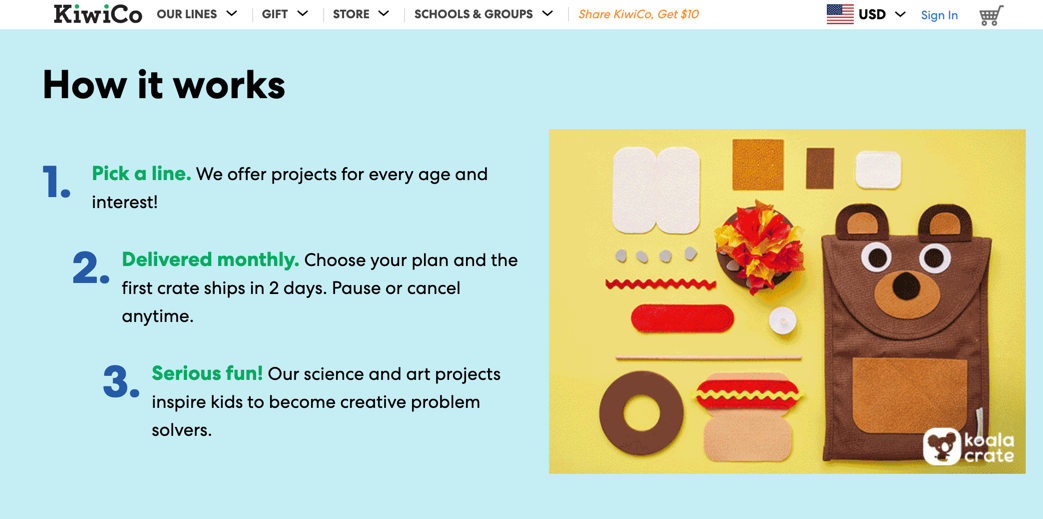
Benefits
- The profit margin potential remains high since customers usually see curation products as luxuries. Not to mention, you get to choose what goes into each box, allowing for some flexibility. Some boxes can have less costly items than others.
- Curation boxes are extremely popular for special occasions, meaning you should expect to see boosted sales during the holidays.
- The customers you keep around are possibly the most loyal customers in all of ecommerce. Some people swear by StichFix and wouldn't dress with anything else. Once you get loyal customers, it's hard for them to let you go.
Potential Downsides
- Many people only view curation boxes as novelties, so there's a higher churn rate.
- It's more expensive to acquire customers for curation boxes when compared to other subscription models.
- Operations are both expensive and complex. You need people to actually fill those boxes with new items every month.

Best Practices for How to Start a Subscription Business
Many entrepreneurs decide on the subscription business model long before they even think of an idea of what to sell. However, it's often wise to go through the process of analyzing product or service viability, then selecting a subscription model based on how it performs in that type of system.
Regardless of your idea timeline, at some point, you must brainstorm what to sell. And that's why the product viability analysis is the first step on our list of best practices for how to start a subscription business. We'll walk you through how to run product viability tests then go into a wide range of other best practices for starting your subscription business the right way.
Spend Extra Time Analyzing Product Viability
Product viability means everything in the early stages of a subscription business. During this stage, you should ask yourself the following questions:
- Does my product category have an extreme amount of competition?
- Is the category more about low-cost leadership? If so, is it an endless race to the bottom?
- What are the cancellation rates in the category? Are they far too high?
- What are the costs of running a subscription business in this category?
- What are the marketing opportunities?
We encourage you to make a long list of potential subscription business ideas and categorize each one. Then, use that information to research the competition. Is there any competition at all? If not, you could be working with an idea that the market doesn't want or need. It's possible you're first to the market, but that's extremely rare, and many first-to-market subscription box businesses end up getting beat out by copycats.
Are there ways for you to improve upon what the competition offers? Is the category saturated? Are there ways to upsell and cross-sell? Is the category more of a novelty or a commodity?
Product viability should go deeper than making an Excel spreadsheet. After you've narrowed down your choices, consider running polls, speaking with potential customers, and running your idea by anyone who you may call a customer in the future. It's an essential part of learning how to start a subscription business.
Keep a Constant Eye on Customer Churn, Both Voluntary and Involuntary
Customer churn comes in two forms: voluntary and involuntary.
Voluntary customer churn is simple: it's when customers go into their accounts and actively cancel their subscriptions.
Involuntary churn comes about when customers don't necessarily complete an account cancellation, but their account ends up stagnant due to situations like network errors, address changes, lost credit cards, or old payment information.
It's essential to monitor your churn rates and identify between the two types. This way, you consistently learn how to improve your products and services, while also identifying ways to keep around customers. After all, a customer who drops their membership is the perfect person to ask about what can be improved.
Focus on Multiple Sales and Marketing Channels
Selling subscriptions on an ecommerce store as your primary sales channel isn't enough for a subscription business. The same can be said about marketing; it's important to utilize several types of marketing channels as opposed to just an email list or simple online advertising.
Subscription businesses often find success by selling their memberships on marketplaces. Cratejoy is the most popular. It serves as a marketing solution (getting your brand in front of its large userbase) and an extra sales channel. You can also sell subscriptions on marketplaces like Amazon. As for marketing, subscriptions perform well with early hype and known ambassadors. Partner with social media influencers and bloggers, create clever videos in hopes of going viral, or make a must-read blog that people look forward to reading. Dollar Shave Club is famous for its hilarious commercials and its informative blog. With content like this, you're able to turn to any type of marketing channel, like online ads, email marketing, and social media without any problems.
Spend More Time on Customer Retention
Subscription services require the prioritization of retention strategies for two reasons:
- It's cheaper to keep current customers than find new ones.
- Subscription businesses thrive when they're able to keep customers on board.
This is particularly important in the early stages of any subscription business. Therefore, focus on ways to make your current customers feel happy and want to share information about your company with other people.
Consider Personalizing Everything
From emails addressing people with their names to boxes that go out with curated gifts, subscription customers have come to expect a particular level of personalization.
Why is that?
Because they know you have direct access to their information. They want to feel like they're part of an exclusive club, so it's imperative to make them feel special around every corner.
Don't Race To The Bottom With Pricing
Many subscription businesses begin their journeys by offering incredibly steep discounts to new customers. Unfortunately, this makes it so much harder for users to switch back to regular pricing when the time comes. Early trials and discounts should clearly offer your business something in return, like guaranteed partial payment for the first month, or data from customers. Don't just make prices low because you want to eventually impress investors with temporary high user counts.
Make a Clear Subscription Business Goal
What's your main goal with the subscription businesses in the first year? This sets the stage for your performance and ensures you're not worried about other areas that may not be performing as well at the beginning.
Do you want to hit a certain user count? Would you like to bring in a specific level of cash flow to push your small business into the next year? Would it be okay to simply sell a set number of memberships even if the revenue isn't quite there yet?


